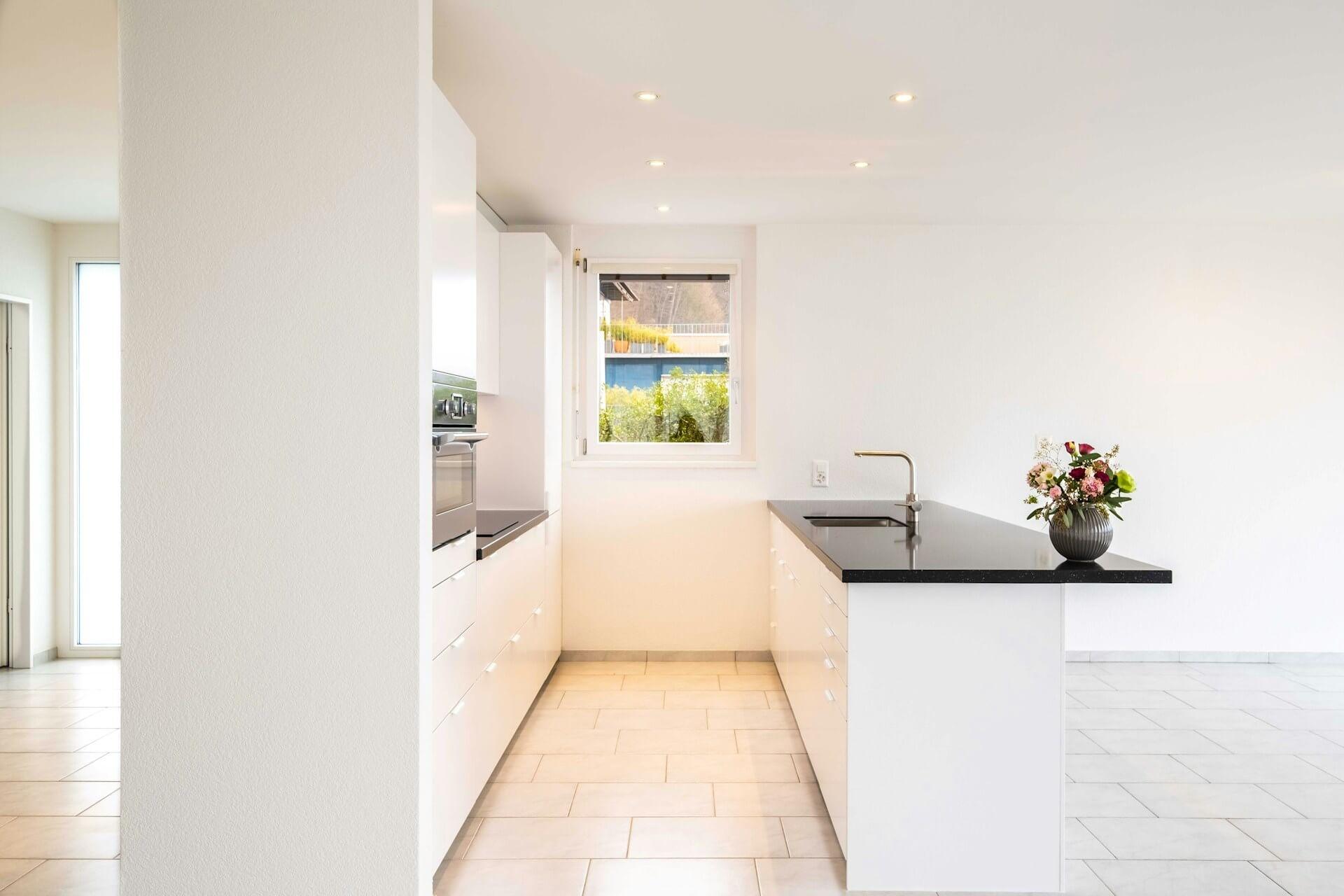Our recent webinar on the care and maintenance of sintered stone, porcelain slabs, and engineered quartz was a success, providing contractors and industry pros with expert tips on keeping these surfaces in top shape. In this blog post, we’ll break down the key takeaways, covering the differences between these materials and offering practical cleaning and stain removal solutions.
Whether you’re a site supervisor overseeing installation or a facilities manager responsible for ongoing maintenance, this guide is designed to help you ensure your surfaces stay in top condition. Keep reading for everything you need to know.
Understanding the Materials
All three materials deliver on durability and visual appeal, and they’re generally resistant to stains and everyday chemicals. However, each one behaves differently on the job, especially regarding cleaning and long-term performance.
Below, we’ll explore the general differences between these surfaces before diving into specific care recommendations for each material, but first, we’ll clarify an essential point about grout residue removal.
The Importance of Proper Grout Residue Removal
Let’s start by clearing up that vital point about grout residue removal. Failing to remove grout residue can result in a range of surface issues, including a stubborn white film that dulls the finish, footprints that stick to the residue, and uneven, shiny, or dull patches. Over time, this buildup can also attract stains, making the surface harder to clean and maintain. Proper post-installation cleaning is, therefore, essential to preserve the pristine appearance of porcelain slabs, sintered stone, and engineered quartz.
Identifying the Type of Grout
If you’re cleaning grout as part of the installation process, you’ll likely already know exactly what type you’re using. However, if you’re tackling post-construction cleaning or purchasing cleaning products ahead of time, it’s essential to double-check that you’re using the right cleaner for the job. Using a cement grout remover on epoxy grout—or vice versa—won’t yield the desired results and could even leave behind further residues.
For more in-depth guidance on identifying grout and choosing the correct FILA cleaner, be sure to read our recent blog post. Now, let’s delve into the specifics of each material and the unique care they require.
Porcelain Slabs
What Are Porcelain Slabs?
Porcelain slabs are crafted from a blend of natural minerals, then fired at high temperatures (1200-1400°C / 2192-2552°F) to create a durable, non-absorbent surface. This makes them highly resistant to stains and chemicals, but they require special attention, particularly during post-installation cleaning, to avoid grout haze that can dull their finish. Ordinary maintenance is carried out with a neutral cleaner, and when needed, specific stain removers should be used to maintain their appearance.
Compared to sintered stone, porcelain is more prone to cracking under impact but less likely to scratch. While it’s more heat-resistant than engineered quartz, it lacks the flexibility that quartz offers due to its inorganic composition.
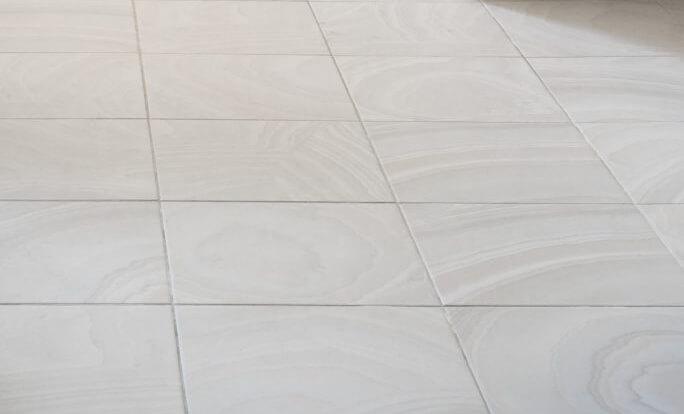
Surface Maintenance for Porcelain Slabs
Post-Installation Cleaning
- Cleaning during installation speeds up the process and prevents grout haze from setting.
- Use INSTANT REMOVER for cement-based grout.
- Use HYBRID & EPOXY PRO for epoxy, urethane, or pre-mixed grout.
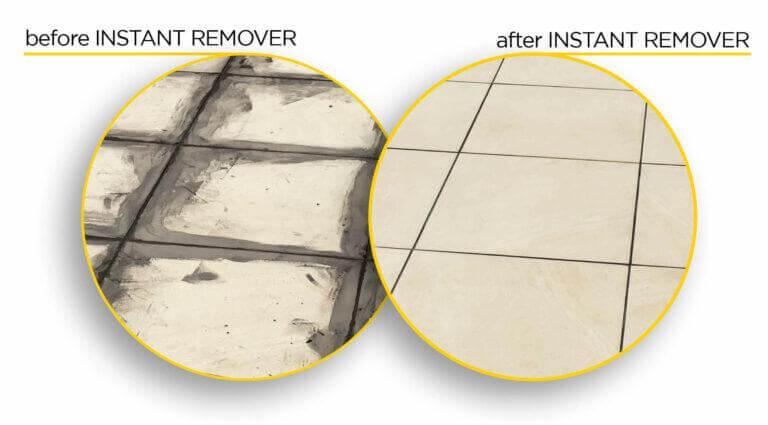
Post-Construction Cleaning
If you cleaned while grouting, additional cleaning may not be necessary. However, if grout residue remains or for fully cured grout, the following cleaners are recommended:
- DETERDEK (a buffered acid cleaner) removes cement-based grout haze.
- EPOXYOFF (an alkaline cleaner) tackles residue from epoxy, urethane, or pre-mixed grout.
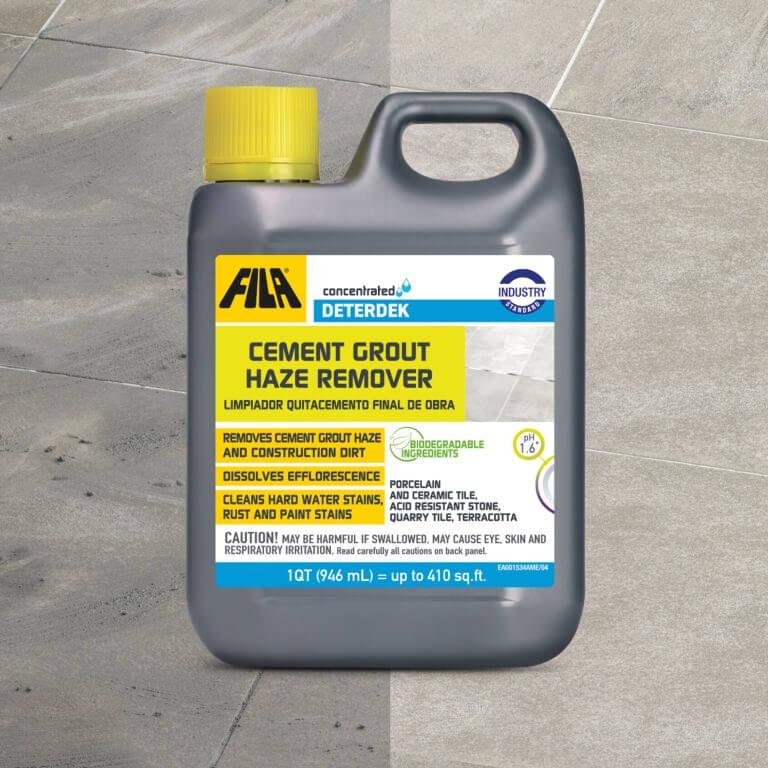
Regular & Special Maintenance
- Every day cleaning: Use CLEANALL for large surfaces and CLEANALL SPRAY for smaller areas.
- Deep cleaning: Use PS87 to remove grease buildup and stubborn stains, and KITCHENKARE FOAM for smaller areas.
- Bathroom maintenance: Use SHOWERCLEAN & SHINE to remove soap scum.
- Stain removal: Use DETERDEK for inorganic stains (cement haze, limescale, rust, and construction dirt).
Sintered Stone
What Is This High-Density Surface?
Sintered stone, made from natural minerals like quartz and feldspar, is fired at extreme temperatures (1250°C / 2282°F) to create an ultra-dense, non-absorbent surface. Like porcelain, it resists stains and scratches, but its varied textures require extra care to maintain its pristine condition.
Sintered stone’s mineral composition gives it superior heat resistance compared to both porcelain and engineered quartz. Unlike quartz, which includes resin binders, sintered stone is entirely mineral-based, making it more UV-resistant and less prone to discoloration, though it can be more brittle under high impact.
Special attention is needed, particularly during post-installation cleaning, to ensure it remains in optimal condition. Ordinary maintenance can be carried out with a neutral cleaner, and specific cleaners should be used for stain removal and special maintenance.

Cleaning & Maintenance for Sintered Stone
Post-Installation Cleaning
- DETERDEK for removing cement-based grout haze.
- EPOXYOFF for removing epoxy, urethane, and pre-mixed grout residue.
- Using the right cleaner prevents long-term surface dullness and buildup
Regular & Special Maintenance
- Every day cleaning: Use CLEANALL for large surfaces and CLEANALL SPRAY for small areas.
- Deep cleaning: Use PS87 for tackling grease and built-up grime, DETERDEK for inorganic stains, KITCHENKARE FOAM for degreasing small surfaces, and SHOWERCLEAN & SHINE for eliminating bathroom soap scum.
- Avoid harsh chemicals or abrasive pads, as they can affect the finish.

Engineered Quartz
What Is Synthetic Quartz?
Engineered quartz is made by combining quartz with resin binders and pigments, creating a non-porous, highly stain-resistant surface ideal for high-use areas. It’s more flexible than both porcelain and sintered stone, which helps prevent cracking, but it’s also more susceptible to scratching and UV damage.
While quartz is less heat-resistant than sintered stone and porcelain, its resin composition makes it more adaptable to various finishes. However, care should be taken with certain cleaners, as they can damage the surface. Alkaline cleaners should be used with caution. After a few years, if needed, the material can be sealed to maintain its appearance and durability.
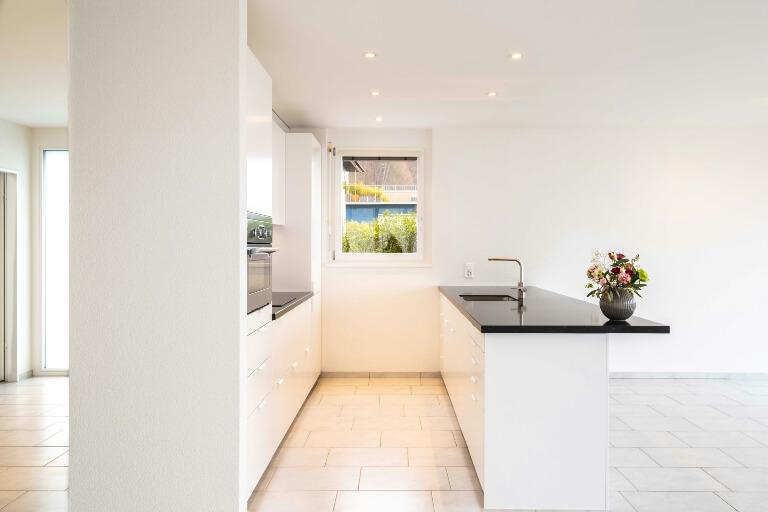
Care & Upkeep for Engineered Quartz
Post-Installation Cleaning
- DETERDEK for removing cement-based grout residue.
- CLEANALL for removing epoxy, urethane, or pre-mixed grout.
Regular & Special Maintenance
- Every day cleaning: Use CLEANALL for large areas and CLEANALL SPRAY for small areas.
- Deep cleaning: DETERDEK for large-scale stain removal. SHOWERCLEAN & SHINE for minor surface maintenance.
- Again, avoid strong alkaline cleaners, as they can degrade the resin over time.
Protection for Man-Made Quartz
As mentioned, over time, quartz may benefit from sealing to maintain its appearance and durability:
- Protect against harsh chemicals: Over time, quartz surfaces can be affected by oils, acids, and strong chemicals. A protective sealer helps shield the material from these substances.
- Enhance stain resistance: Using a water- and stain-repellent sealer, like MP90 ECO PLUS, boosts quartz’s ability to resist stains and moisture.

Stain Removal Problem-Solving
Even with regular maintenance, stains can occur. Here’s how to tackle them effectively:
Colored Organic Stains
Use SR95 to target and eliminate colored stains like wine, coffee, juice, and more. It’s a specially formulated product that works on a range of organic stains, restoring the surface to its original condition.
Rust Stains
- Large stains: Use DETERDEK to tackle more prominent rust stains. Its robust formulation helps break down and remove stubborn rust marks from surfaces.
- Small stains: For more minor rust spots, NORUST is effective in treating these localized stains without damaging the surface.
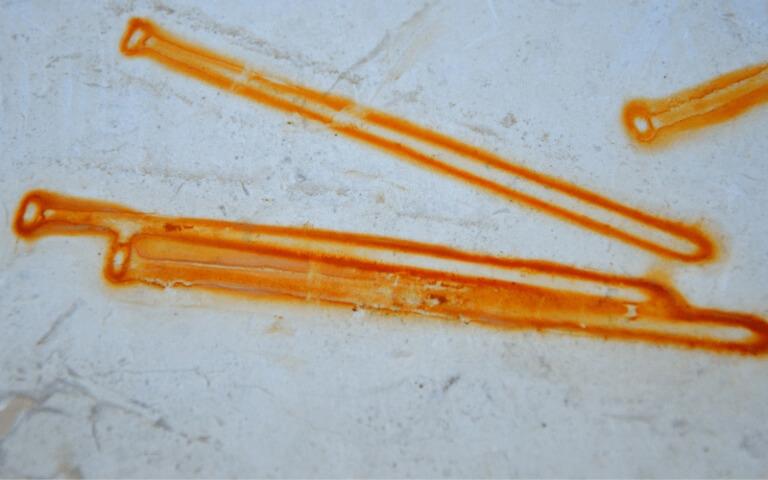
Silicone Residue
Use ZEROSIL to remove silicone stains, adhesive residue, tape marks, and polyurethane foam residue (Porcelain & Sintered Stone only). It effectively eliminates unwanted marks and residues from surfaces without causing damage.
Stay Tuned for More Expert Advice
Caring for sintered stone, porcelain slabs, and engineered quartz doesn’t have to be complicated when you have the right products and knowledge. By following these expert-recommended cleaning and maintenance tips, you can ensure these surfaces stay beautiful and durable for years to come.
If you have any questions or need advice on choosing the right FILA Solutions products, feel free to get in touch. And don’t forget to stay tuned for our next webinar, where we’ll share more industry insights and professional care techniques.
